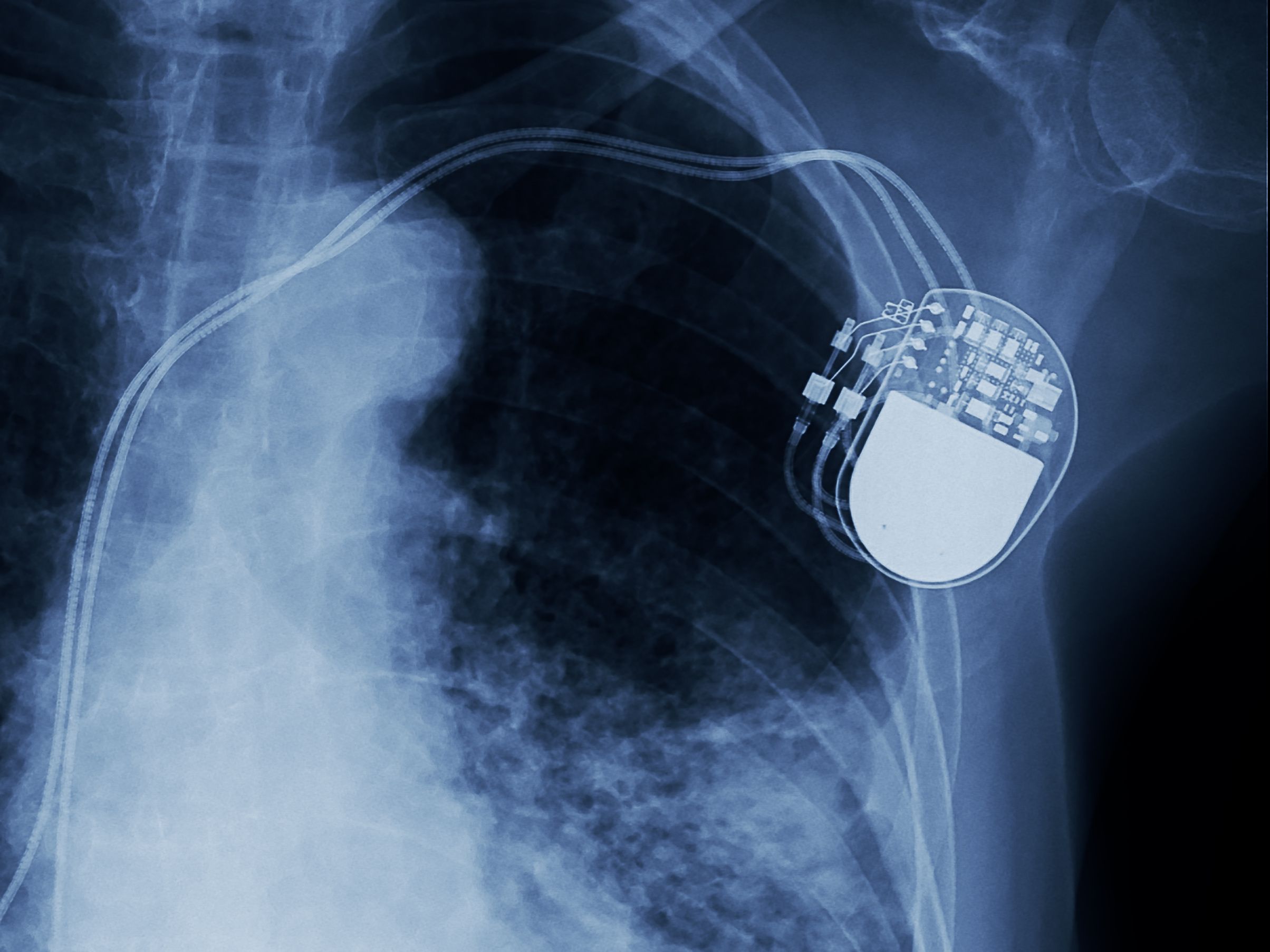Leadless pacemakers could prove useful for pediatric patients with arrhythmias
A retrospective analysis of more than 60 patients 21 years or younger who received a transcatheter leadless pacemaker provides an overview of the safety of such an approach in younger patient populations.
X-ray image of pacemaker | Image Credit: © Choo - © Choo - stock.adobe.com.

New data from Penn Medicine could encourage increased usage of wireless or leadless pacemakers among pediatric patients with arrhythmias.
An analysis of retrospective data from 15 pediatric electrophysiology centers, results of the study indicated a high level of implantation success with transcatheter leadless pacemakers via femoral and internal venous jugular approaches, with stable electrical parameters and infrequent complications.
“The leadless pacemaker works very well in children, just like it does in adults. We found it may be safely implanted in select pediatric patients that need pacing,” said lead investigator Maully J. Shah, MBBS, director of cardiac electrophysiology in the Cardiac Center at Children’s Hospital of Philadelphia and a professor of pediatrics at the Perelman School of Medicine at the University of Pennsylvania.2 “Our study’s results indicate select children may be considered candidates since they may benefit greatly from leadless pacing. However, because of the current technology, which uses a very large catheter designed for adults to place the leadless pacemaker and lack of reliable future extractability of the pacemaker, the wider pediatric population is not able to benefit from this device.”
With a well-elucidated safety and efficacy profile in the management of arrhythmias in adult populations, leadless peacemakers have seen their role grow since the initial approval of the Micra Transcatheter Pacing System in 2016.3 A retrospective analysis of data from the Pediatric and Congenital Electrophysiology Society Transcatheter Leadless Pacing registry, Shah and a team of investigators launched the current study with the intent of exploring the safety and efficacy of transcatheter leadless pacing in pediatric patients for whom repeated sternotomies, thoracotomies, or transvenous systems are unfavorable.1
For the purpose of analysis, investigators limited the population to those agent 21 years of age or less who underwent Micra transcatheter leadless pacemakers with at least 1 week of follow-up from 15 contributing centers within the Congenital Electrophysiology Society Transcatheter Leadless Pacing registry. A total of 63 patients were identified for inclusion in the study.1
Among the 63 registry patients, 62 underwent successful implantation. Of the 63 patients, transcatheter leadless pacemakers were implanted with a femoral approach in 87% (n=55) of patients and with an internal jugular approach in 12.6% of patients.1
The mean age at implantation was 15 (SD, 4.1) years, the mean body weight was 55 (SD, 19) kg and 32% of patients had congenital heart disease. Investigators pointed out 8 registry patients were 8 years of age or younger and 30 kg in weight or less.1
During a mean follow-up period of 9.5±5.3 months, 10 complications were observed, including 1 cardiac perforation/pericardial effusion, 1 nonocclusive femoral venous thrombus, and 1 retrieval and replacement oftranscatheter leadless pacemaker due to high thresholds. Investigators highlighted there were no deaths, TLP infections, or device embolizations in the follow-up and electrical parameters, including capture thresholds, R wave sensing, and pacing impedances, remained stable.1
“Leadless pacemaker technology is the wave of the future,” Shah added.2 “This is an excellent technology that may be offered to a wider pediatric population. However, techniques and tools to place the device must be designed for smaller patients, specifically children, and there needs to be a mechanism to remove and replace this pacemaker without surgery when the battery runs out since pediatric patients will likely require pacing for the rest of their lives, which is several decades after implantation.”
References
- Williams MR, Shah M, Borquez AA. Transcatheter Leadless Pacing in Children: A PACES Collaborative Study in the Real-World Setting. Circulation: Arrhythmia and Electrophysiology. April 2023. doi:10.1161/CIRCEP.122.011447
- Wireless pacemakers may be safe, effective for children with irregular heart rhythms. American Heart Association. https://newsroom.heart.org/news/wireless-pacemakers-may-be-safe-effective-for-children-with-irregular-heart-rhythms?preview=4e9d. Published April 11, 2023. Accessed April 11, 2023.
- Commissioner Oof the. FDA approves first leadless pacemaker to treat heart rhythm disorders. U.S. Food and Drug Administration. https://www.fda.gov/news-events/press-announcements/fda-approves-first-leadless-pacemaker-treat-heart-rhythm-disorders. Published April 11, 2023. Accessed April 10, 2023.